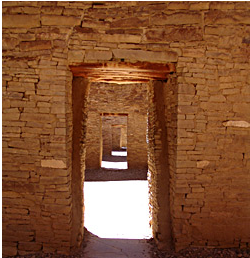Publication Date
5-1-2015
Abstract
This dissertation examines morphological variability (differences in qualitative attributes and metric dimensions) that is observed when comparing assemblages of projectile points. My archaeological case study is an evaluation of cultural historical types' of projectile points that have been assigned variously to the Alberta, Cody, or Firstview Complexes of the early Holocene from approximately 10,000 B.P. to 8,200 B.P. This analysis includes both quantitative and qualitative observations of 361 complete and fragmentary projectile points from 13 archaeological sites located in New Mexico, Colorado, Wyoming, and Nebraska. My analyses showed that qualitative attributes and metric dimensions of projectile points vary more through time than through space. Since projectile point styles were used for hundreds of years and were distributed over a wide geographic area, culture change occurred slowly in the Paleoindian period. This is known as conservative cultural transmission. I proposed that conservative cultural transmission confers social benefits on small, highly mobile, hunter-gatherers because it facilitated interaction among individuals and bands that manufactured Cody Complex projectile points. The subsistence and social advantages of interactions among Paleoindian bands likely included finding exogamous mates, cooperation in communal bison hunting, and conducting ritual activities. This model is supported because projectile points that previous researchers assigned to the Cody or Firstview Complexes cannot be differentiated by their qualitative and quantitative attributes. Therefore, conservative cultural transmission indicates that these bands were in contact.'
Keywords
Paleoindian Cody Complex, projectile point typology, cultural transmission
Project Sponsors
The New Mexico archaeological council, the George C. Frison Institute of Archaeology and Anthropology, the Foundation for Science and Disability, the College of Engineering, New Mexico State University, the National Science Foundation Continuing Grant No. HRD 0622930, the Accessibility Resource Center, University of New Mexico, and the New Mexico Commission for the Blind
Document Type
Dissertation
Language
English
Degree Name
Anthropology
Level of Degree
Doctoral
Department Name
Anthropology
First Committee Member (Chair)
Bruce B. Huckell
Second Committee Member
Lawrence G. Strauss
Third Committee Member
E. James Dixon
Fourth Committee Member
Mary Lou Larson
Recommended Citation
Fogle-Hatch, Cheryl K.. "Explanations for Morphological Variability in Projectile Points: A Case Study from the Late Paleoindian Cody Complex." (2015). https://digitalrepository.unm.edu/anth_etds/22

